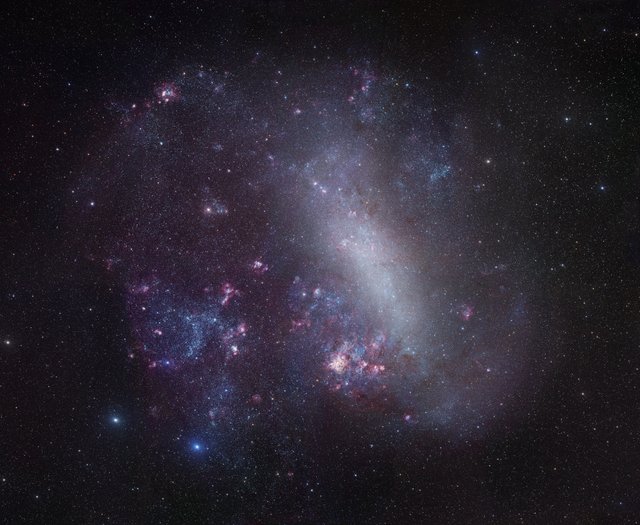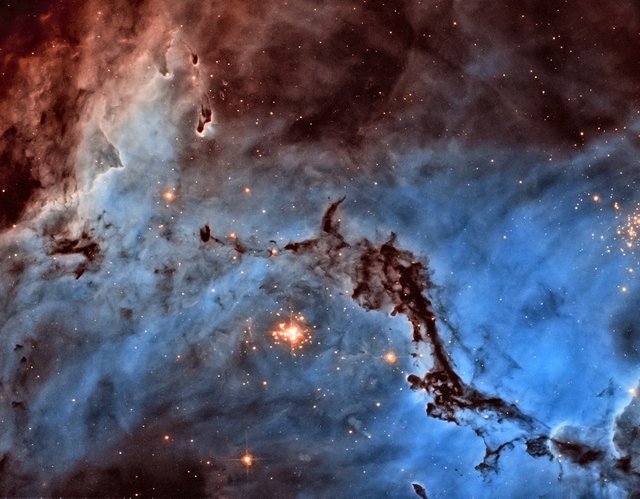Galaxy - The Magellanic Cloud
Great Magellanic Cloud:
This phenomenon is composed of two clouds of differentiated stars that are observed from the Southern Hemisphere of the Earth. It is 163,000 light years away (about 41,700 parsecs) away, being the third galaxy closest to the Milky Way after the Dwarf galaxy of the Greater Canary and the Sagittarius Elliptical Dwarf galaxy (SagDEG).

The Large Magellanic Cloud contains about 30,000 million stars and has a diameter of approximately 35,000 light years. Its mass is about 30,000 million times the solar mass, one tenth of the mass of the Milky Way. Like a large part of irregular galaxies, the Great Cloud is very rich in gas and dust. The various studies have found about 60 globular clusters -something less than half that of the Milky Way-, 400 planetary nebulae and 700 open clusters, as well as hundreds of thousands of giant and supergiant stars, within the Large Magellanic Cloud. It is composed of a bar of old and red stars, clouds of young stars and a bright region of formation that is visible at the top of this image called the Tarantula Nebula. The brightest supernova of modern times, SN1987A, exploded in the GNM.

Moreover, according to the studies of their observation through the Hubble Space Telescope, they move very fast in comparison with the Milky Way. Hence, their orbits around our galaxy are very eccentric.
These clouds have been basic throughout the history of mankind. Maori civilizations and other Pacific civilizations already used them to navigate and predict the winds.
The first written documents where they are spoken of date from the Persian astronomer Al Sufi in the year 964.
In the 15th and 16th century they were used by Portuguese, Spanish and German navigators and were studied by great scientists such as John Herschel or Henriette Swan Leavitt.

https://es.wikipedia.org/wiki/Gran_Nube_de_Magallanes
http://www.astromia.com/fotouniverso/magallanes.htm
https://www.vix.com/es/ciencia/174934/que-son-las-nubes-de-magallanes